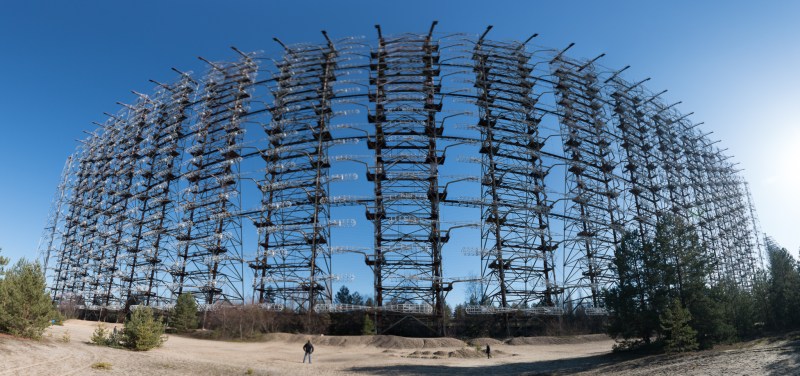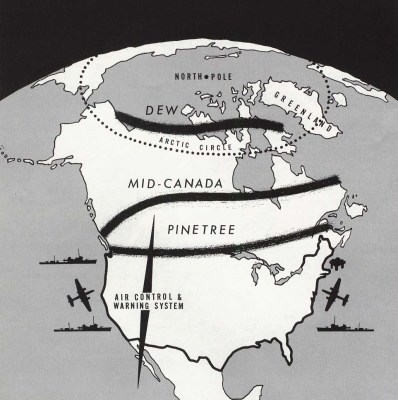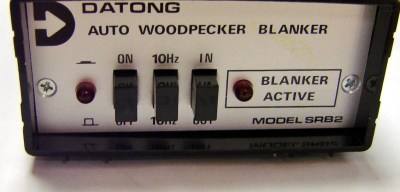
On July 4th, 1976, as Americans celebrated the country’s bicentennial with beer and bottle rockets, a strong signal began disrupting shortwave, maritime, aeronautical, and telecommunications signals all over the world. The signal was a rapid 10 Hz tapping that sounded like a woodpecker or a helicopter thup-thupping on the roof. It had a wide bandwidth of 40 kHz and sometimes exceeded 10 MW.
This was during the Cold War, and plenty of people rushed to the conclusion that it was some sort of Soviet mind control scheme or weather control experiment. But amateur radio operators traced the mysterious signal to an over-the-horizon radar antenna near Chernobyl, Ukraine (then part of the USSR) and they named it the Russian Woodpecker. Here’s a clip of the sound.
The frequency-hopping Woodpecker signal was so strong that it made communication impossible on certain channels and could even be heard across telephone lines when conditions were right. Several countries filed official complaints with the USSR through the UN, but there was no stopping the Russian Woodpecker. Russia wouldn’t even own up to the signal’s existence, which has since been traced to an immense antenna structure that is nearly half a mile long and at 490 feet, stands slightly taller than the Great Pyramid at Giza.
This imposing steel structure stands within the irradiated forest near Pripyat, an idyllic town founded in 1970 to house the Chernobyl nuclear plant workers. Pictured above is the transmitter, also known as Duga-1, Chernobyl-2, or Duga-3 depending on who you ask. Located 30 miles northeast of Chernobyl, on old Soviet maps the area is simply labeled Boy Scout Camp. Today, it’s all within the Chernobyl Exclusion Zone.
It was such a secret that the government denied it’s existence, yet was being heard all over the world. What was this mammoth installation used for?
Distant Early Warning
The Duga radar was one of two transmitter/receiver pairs built in response to the Distant Early Warning Line (DEW Line), a smattering of antennas that were built above the Arctic Circle in a joint effort between the US and Canada. Like any over-the-horizon radar, the theory behind Russia’s system was that Moscow would have about 25 minutes to respond to ICBMs in kind, rather than having a mere 10 minutes or so in which to duck and cover and kiss the world goodbye. To get a better idea of the scale of this thing, check out Tom Scott’s brief tour in the video embedded below.

Over-the-horizon radar relies on a similar phenomenon that delivers such great range for amateur radio — the signals bounce off the ionosphere and are thus able to overcome the curvature of the Earth, which allows it to detect launches much earlier than standard ground radar can.
In the 2015 documentary The Russian Woodpecker, a film crew led by an artist from Kiev attempts to uncover the mysteries of the antenna. He believes that the nuclear incident at Chernobyl was orchestrated to divert attention away from the structure, which was due for an upcoming inspection that it was never going to pass.
According to the documentary, the Duga antenna cost twice as much as the Chernobyl plant itself — around 7 billion Rubles. Putting this cost in historical context is tricky. Using the Treasury Reporting Rates of Exchange as of June 30, 1976 we find the exchange rate at the time was 0.7550 Rubles to Dollars. That places the 1976 cost at about $9.27 billion. Inflation adjusted that’s $43.16 billion in 2021 value — a mind-boggling sum that makes us question the documentary’s cost assessment (and the accuracy of our own conversion process).
Some sources say the radar system never worked. Other sources claim that it did, and that they were able to detect every single Shuttle launch with it. And when the Woodpecker was reported to be interfering with Russian SOS signals, they altered the frequency. But after they did that, it stopped working because of interference from Aurora borealis.
Making Moscow Mufflers
Eventually, companies and individuals built blanker circuitry to tune out the incessant tapping. Conventional interference blanker circuits work by looking for short pulse duration with fast rise time, and generate a signal to shut off a gate in the signal path. But these would be useless to drown out the Woodpecker, because they don’t work on lower-amplitude pulses.

The problem with blanking the Woodpecker’s signal was that it had a large bandwidth and inconsistent pulses. Ionospheric reflection would stretch the pulses and sometimes create echoes, turning it into a game of whack-a-mole. To make matters worse, they often looked like regular signals, making it even harder to isolate the Woodpecker from whatever the desired signal was.

One popular device was the AEA Moscow Muffler (PDF), which worked by generating an internal signal of 10 or 16 Hz to blank out the Woodpecker. But if the ionosphere was stretching the pulses, the blanker’s pulse width had to be increased to compensate, which often meant losing the desired signal in the shuffle.
Another device, the Datong SRB2, was much more of a set-it-and-forget-it deal (PDF, page 39). The SRB2 worked much like the Moscow Muffler, by generating an internal clock and comparing it with the Woodpecker signal.
The nifty thing about the SRB2 is that it was automatic. Once it found a match, it tailored the blocking pulse to suit by dialing in the pulse width, the number of blanking pulses, and their ideal positions. Conversely, the Moscow Muffler used fixed-width pulses, so you had to keep messing with it in order to keep the signal blanked out.
Still Standing, Silent
The Russian Woodpecker interference stopped after the fall of the Soviet Union in 1989, around which time its existence was finally confirmed by the Soviet government. By then, the Russians had moved on to satellites for their early warning purposes.
In 2013, a similar signal started to terrorize the shortwaves, though not as strongly as the original. It is believed to come from a new Russian OTH radar system called Container, which looks to be nearly as big as Duga. If you want to check it out, tune to 14.270 on shortwave and let us know what you hear!
0 Commentaires